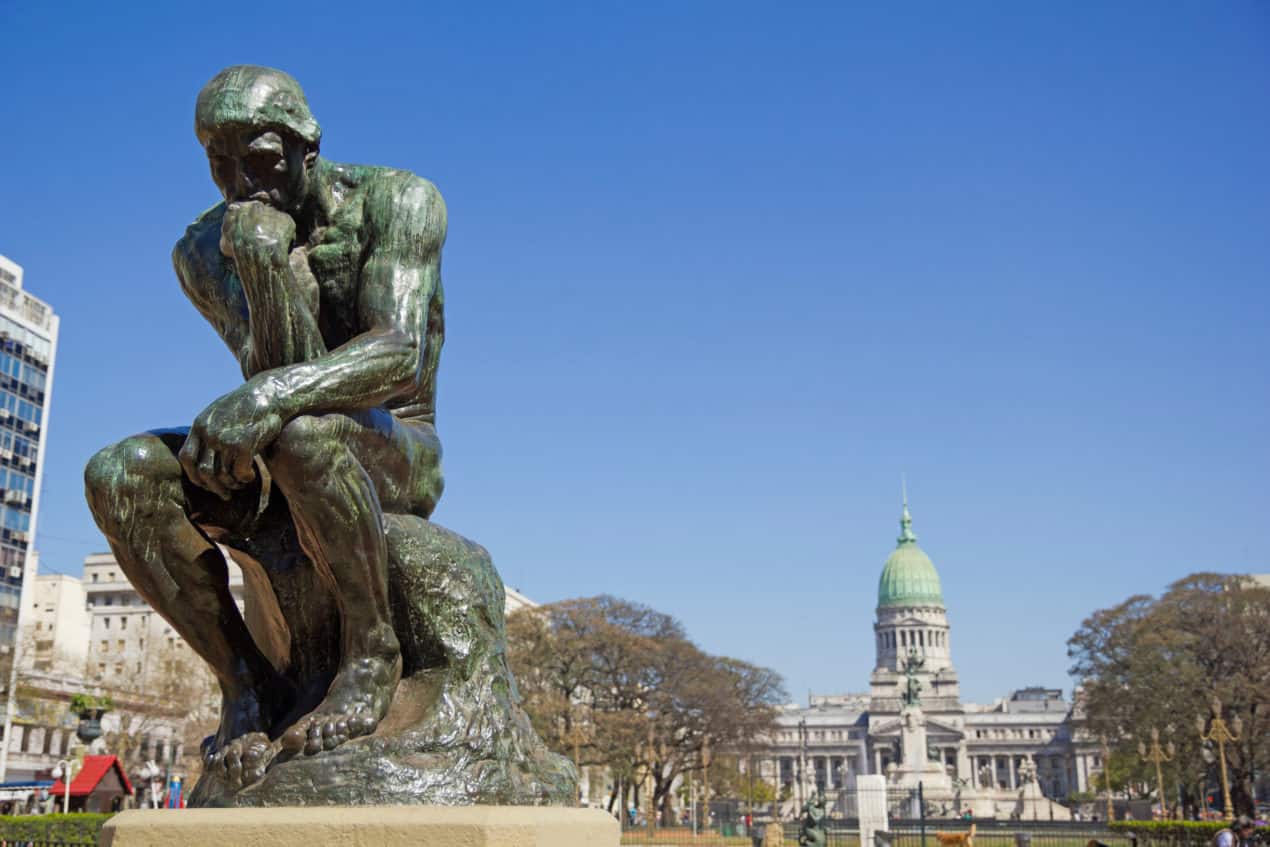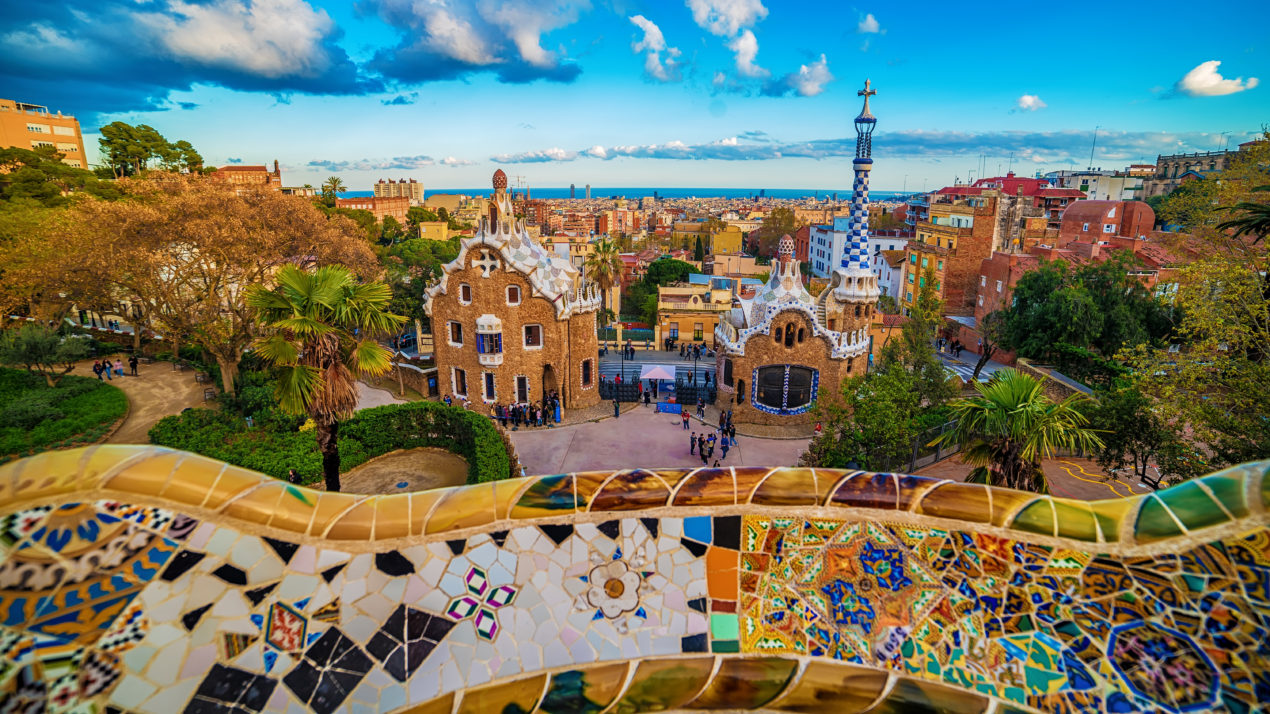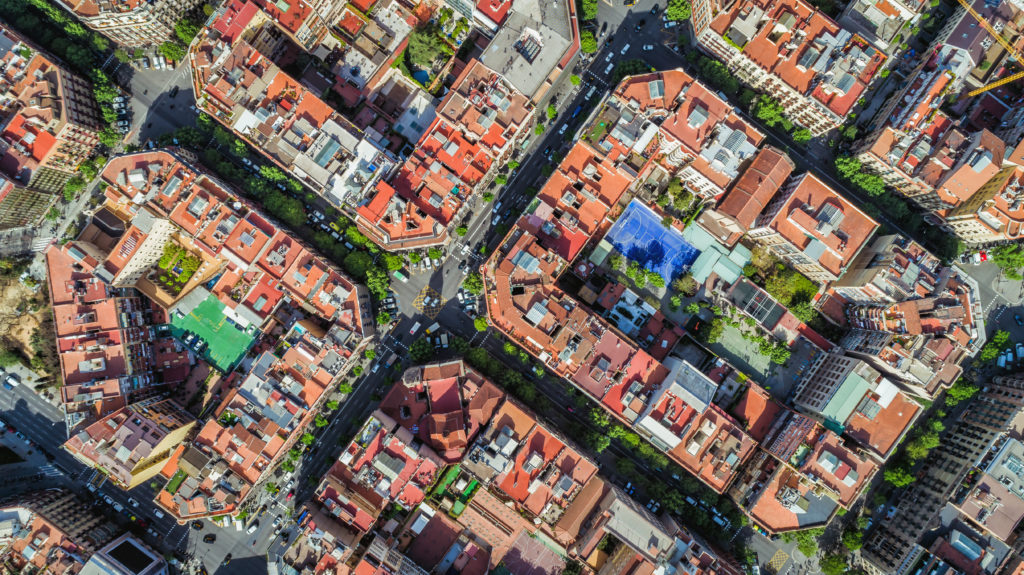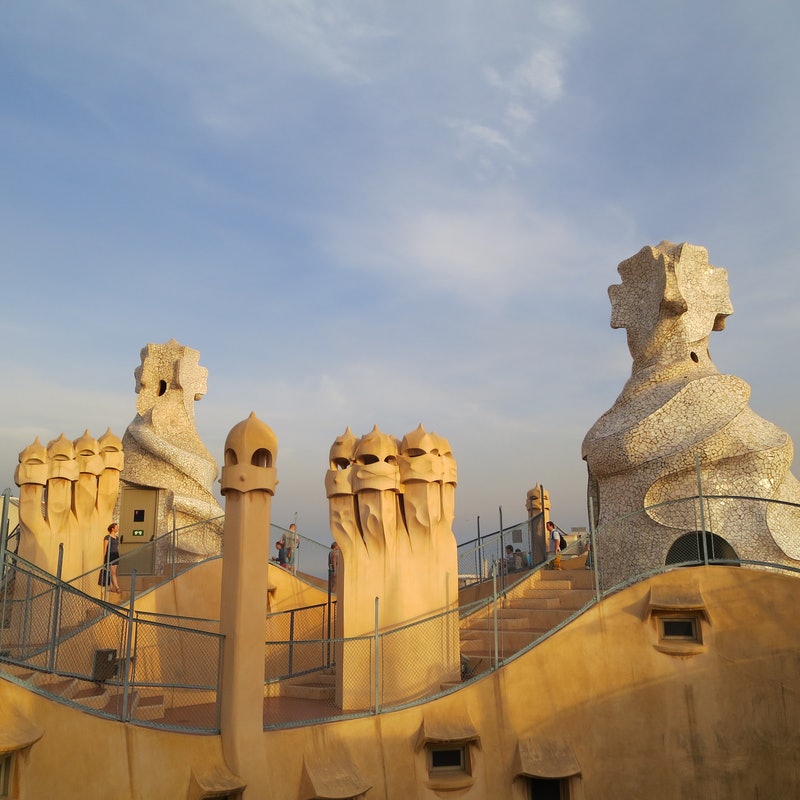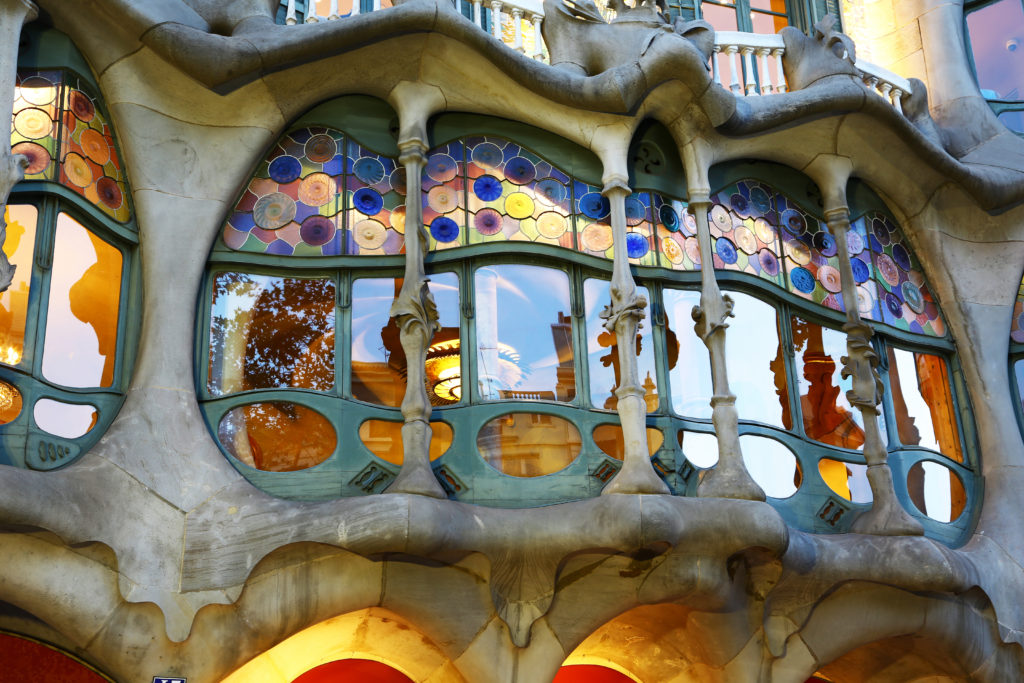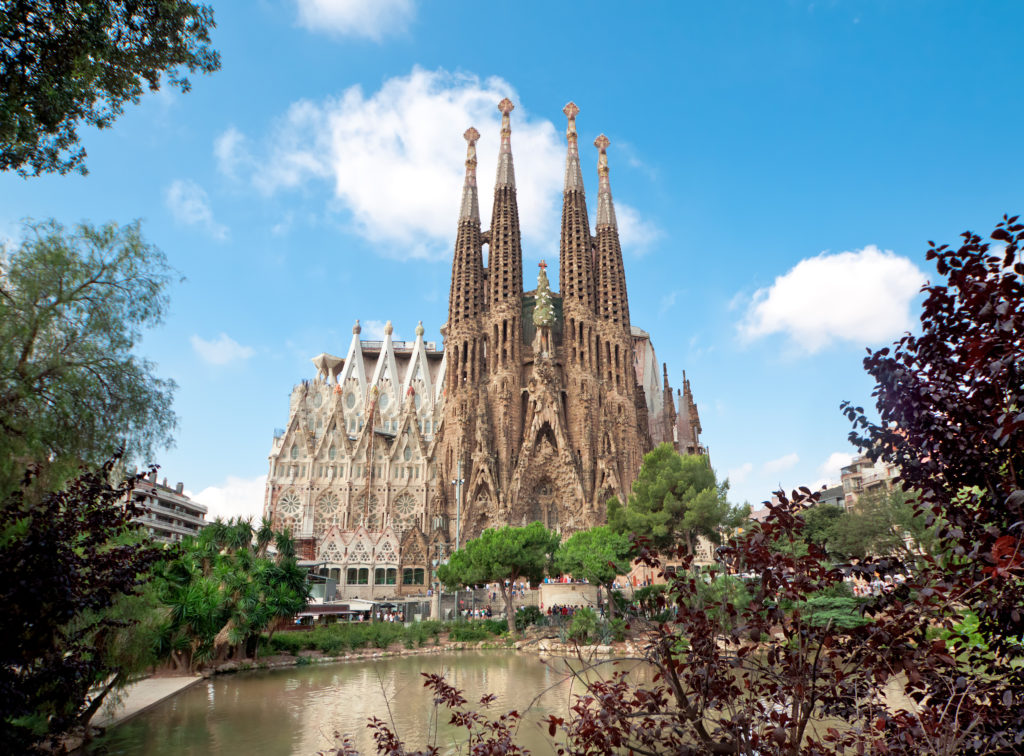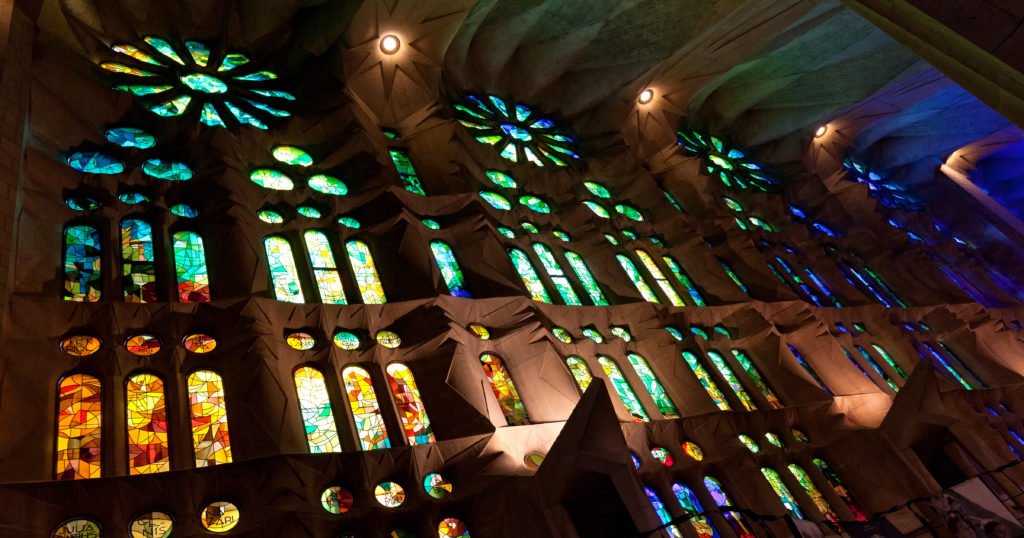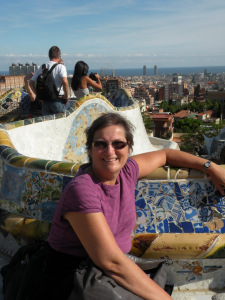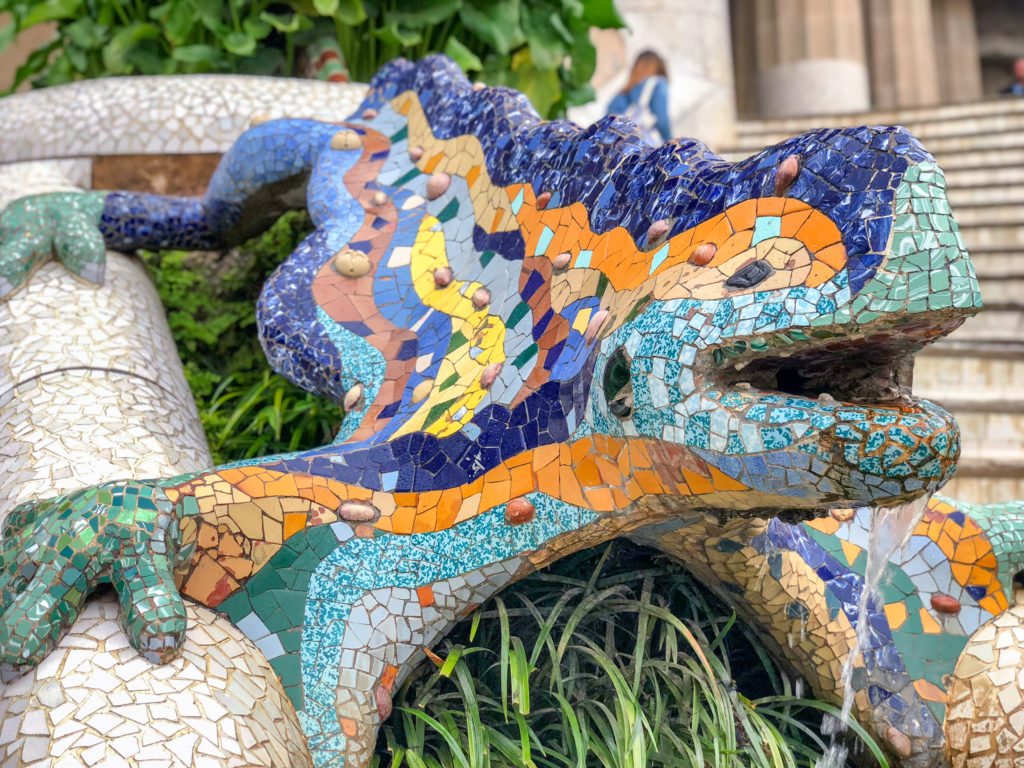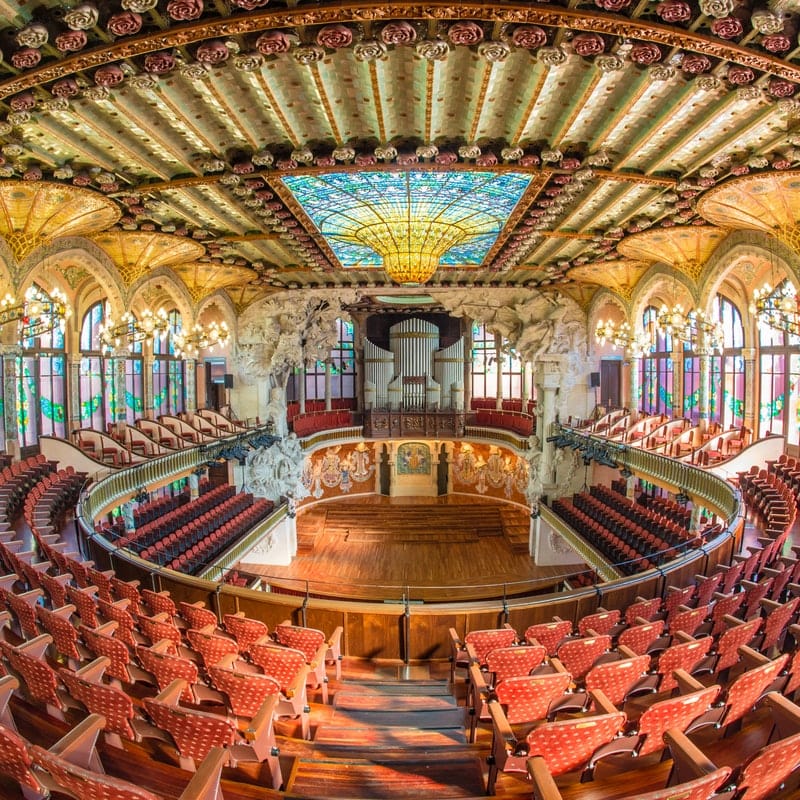Paris for Art Lovers: Nine of the Best Small Museums in Paris
Choosing the best small museums in Paris to feature in a post about my fave art museums is like choosing a favorite child. It’s almost impossible! But I’m going to give it whirl anyway to introduce you to some museums that you may not have visited.
You’ll notice I’ve left the three biggies off my list: the Louvre, the Musée d’Orsay and the Centre Pompidou. All three are über must-sees, and you’ll find information about them in this post that matches Parisian sights with bistro dishes from my novel Love Among the Recipes.
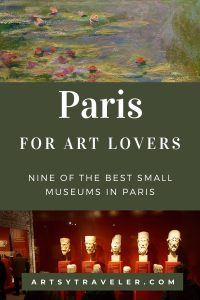
But the operative word in this post is small, some may even say obscure! You will find some fairly well-known museums on my list, but you may also find several that you have not heard of, let alone visited.
I’ve organized the museums by arrondissement, starting with the Orangerie in the 1st arrondissement and ending with the Marmottan Museum in the 16th arrondissement. The map belows shows the location of each museum.
#1: The Orangerie
The Musée de l’Orangerie is not far from the Louvre and overlooks the Jardin des Tuileries. I always enjoy popping into the Orangerie to revisit one of the most compelling exhibitions in Paris.
Here, in two consecutive oval salons, you’ll view the eight large paintings that make up Les Nymphéas by Monet. Lit by natural light from the ceiling and oriented from west to east, the light follows the course of the sun.
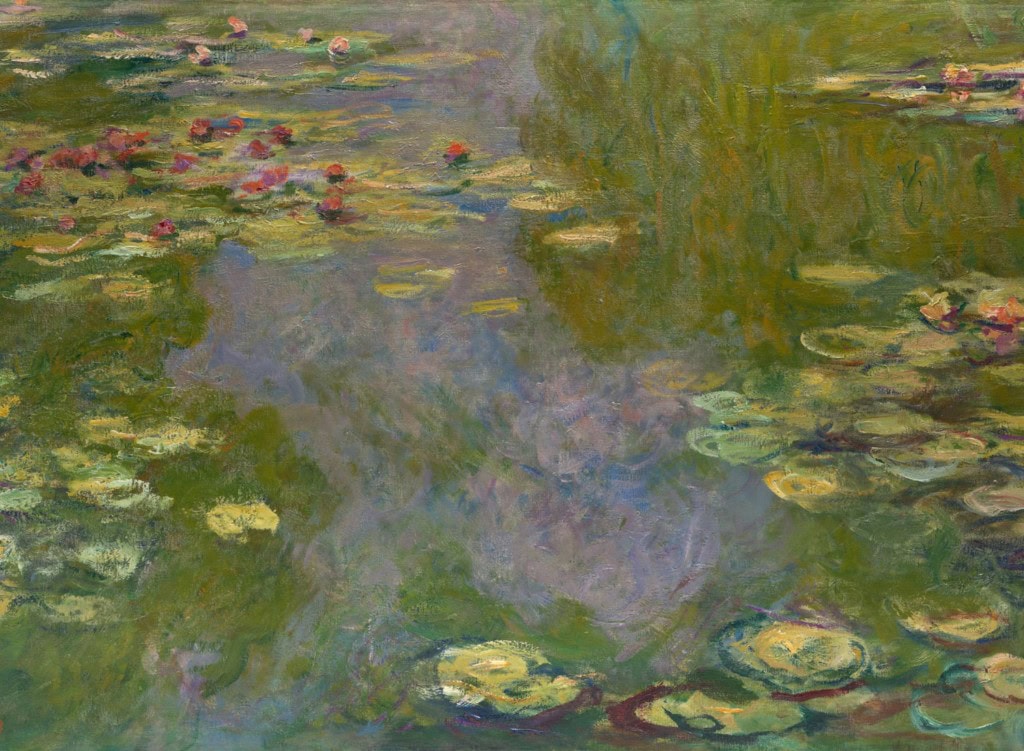
Monet helped to design these rooms in which his paintings are displayed. He wanted visitors to immerse themselves in the paintings and find solace in their beauty following the horrors of World War I. Monet certainly knew what he was about. Walking through the two salons of the Orangerie feels like being submersed in a cool, blue, calm oasis. As you can tell, I love this space!
Take a virtual tour of the Orangerie.
Visiting the Orangerie
Go to the Orangerie as early in the day as possible to avoid the crowds. Contemplating these incredible paintings is best done in quiet and solitude.
In the first salon, the four compositions depict the reflections of the sky and vegetation in the water from morning to evening. The colors vary from yellows and pinks to greens. I find the paintings the first salon both cheerful and soothing.
But my favorite is the second salon, where the dominant blues inspire a mood of intense calm. Relax on one of the benches and let the beauty of the pieces wash over you. You’ll almost feel as if you’re actually in nature, rather than simply looking at depictions of nature.
After viewing the water lily paintings, check out the rest of the Orangerie. The permanent collection includes works by most of the greats, including Renoir, Gauguin, Cézanne, and Sisley.
Special Exhibitions at the Orangerie
We’ve seen some beautifully curated special exhibitions at the Orangerie, most recently an exhibition of Spanish impressionists. Consult the website to see what’s on.
The Orangerie is located at the Jardin des Tuileries, Place de la Concorde. The closest Métro is Tuileries. Make sure to buy your ticket in advance so you can skip the line-up. The museum is open from 9 am to 6 pm daily except Tuesdays.
#2: Picasso Museum
Situated in the heart of Le Marais, the Musée National Picasso-Paris is home to over 5,000 works in a comprehensive collection that includes paintings, sculptures, and engravings.
Housed in the historic Hôtel Salé, a private mansion at 5 rue de Thorigny, the building has been described as “the grandest, most extraordinary, if not the most extravagant, of the grand Parisian houses of the 17th century”.
You’ll also see sketches, studies, drafts, notebooks, etchings, photographs, films, illustrated books, and other documents that demonstrate Picasso’s creative process.
If you’re a fan of modern art, and Picasso in particular, this beautiful museum will keep you well entertained and informed.
The Picasso Museum is open Tuesday to Friday from 10.30 am to 6 pm and weekends from 9.30 am to 6 pm. The museum is popular, so buy your ticket in advance.
#3: Cluny Museum
If I had to choose my favorite art museum in Paris, I would have to say the Musée de Cluny – Le monde médiéval, known colloquially as the Cluny. I enjoy it more than the three biggies for several reasons.
First, it’s manageable, unlike its larger cousins. You can tour the Cluny in an afternoon and still have energy to enjoy the lively 5th arrondissement. Spend an afternoon pacing the massive galleries at the Louvre and you’ll need an hour relaxing by a fountain in the Tuileries to recover.
Second, the Cluny features room after room of outlandishly awesome objets d’art from the Middle Ages–the historical period I most prefer.
Third, you’ll see the gorgeous Lady and the Unicorn tapestries woven from silk and wool in Paris around 1500. Admiring these six tapestries is worth the price of admission alone.
What to See at the Cluny
Take a seat in the special circular room that houses the tapestries and enjoy decoding how each of the first five tapestries depicts a different sense: taste, touch, smell, hearing, and sight. And what is the meaning of the sixth tapestry titled À mon seul désir? The jury’s still out, but some say the tapestry represents love.

The sixth tapestry: À mon seul désir Photo: Wikipedia
In addition to the tapestries, the Cluny offers amazing displays of wooden statues, stained glass, objects made from ivory, stone sculptures, and numerous household objects, furniture, paintings… the list goes on.
On one visit to the Cluny, I happened upon a concert of medieval choral music in the sculpture courtyard. Hearing that music while surrounded by the objects made during the same period was transporting. I love coming upon unexpected performances when I’m traveling in Europe. Keep your eyes peeled (as my Dad used to say). You’re bound to discover all sorts of opportunities to enjoy performances in some of your favorite museums and galleries.
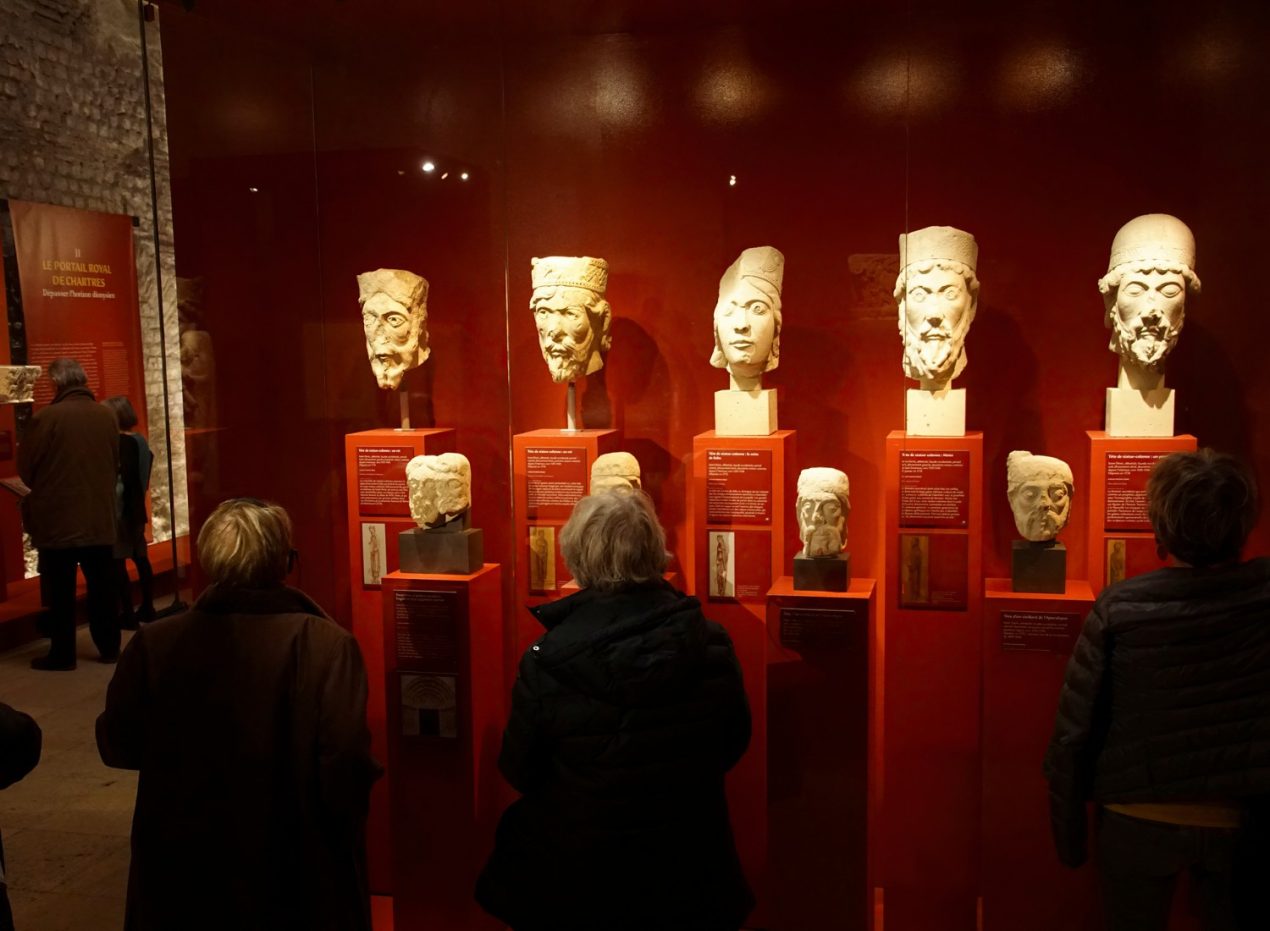
Check the website to find out if concerts are scheduled when you’re in Paris. In the meantime, you can explore the collections at the Cluny on the museum’s comprehensive website.
The Cluny is located at 28 Rue du Sommerard. The closest Métros are Cluny-La Sorbonne, Saint-Michel, and Odéon.
#4: Zadkine Museum
The Musée Zadkine has been called a “folly” in the middle of Paris. On rue d’Assas in the 6th arrondissement and close to the Luxembourg Gardens and hip Montparnasse, the Zadkine Museum was once the studio of Ossip Zadkine (1890-1967), a sculptor of Russian origin.
The small exterior door leads you into a calm, green space that feels miles away from the bustle of Paris. You’ll find sculptures in a variety of media, including wood, stone, clay, and even bronze, along with graphic works and illustrations, photographs, tapestries, and archival material.

Sculpture by Zadkine at the Zadkine Museum. Photo: Wikipedia
Shortly before he died, Zadkine wrote, “But it is in any case very beautiful to end your life with a chisel and mallet in your hands.”
The Musée Zadkine is located at 100 bis Rue d’Assass and is open from 10 am to 6 pm Tuesday to Sunday. The closest Métros are Notre-Dame des Champs and Vavin.
#5: Quai Branly Museum
Not far from the Eiffel Tower but still in the 7th arrondissement and close to the river, the spectacular Musée du Quai Branly Jacques Chirac is a must-see. I never tire of visiting this museum because there is such an incredible number of things (370,000 apparently) to ponder and enjoy.
The Quai Branly houses a remarkable collection of art and objects from around the globe organized into four geographical areas—Africa, Asia, Oceania and the Americas.
I love this museum’s attention to detail. Interactive screens set up in alcoves around the museum provide in-depth information about specific exhibits. You could spend weeks here and only scratch the surface.
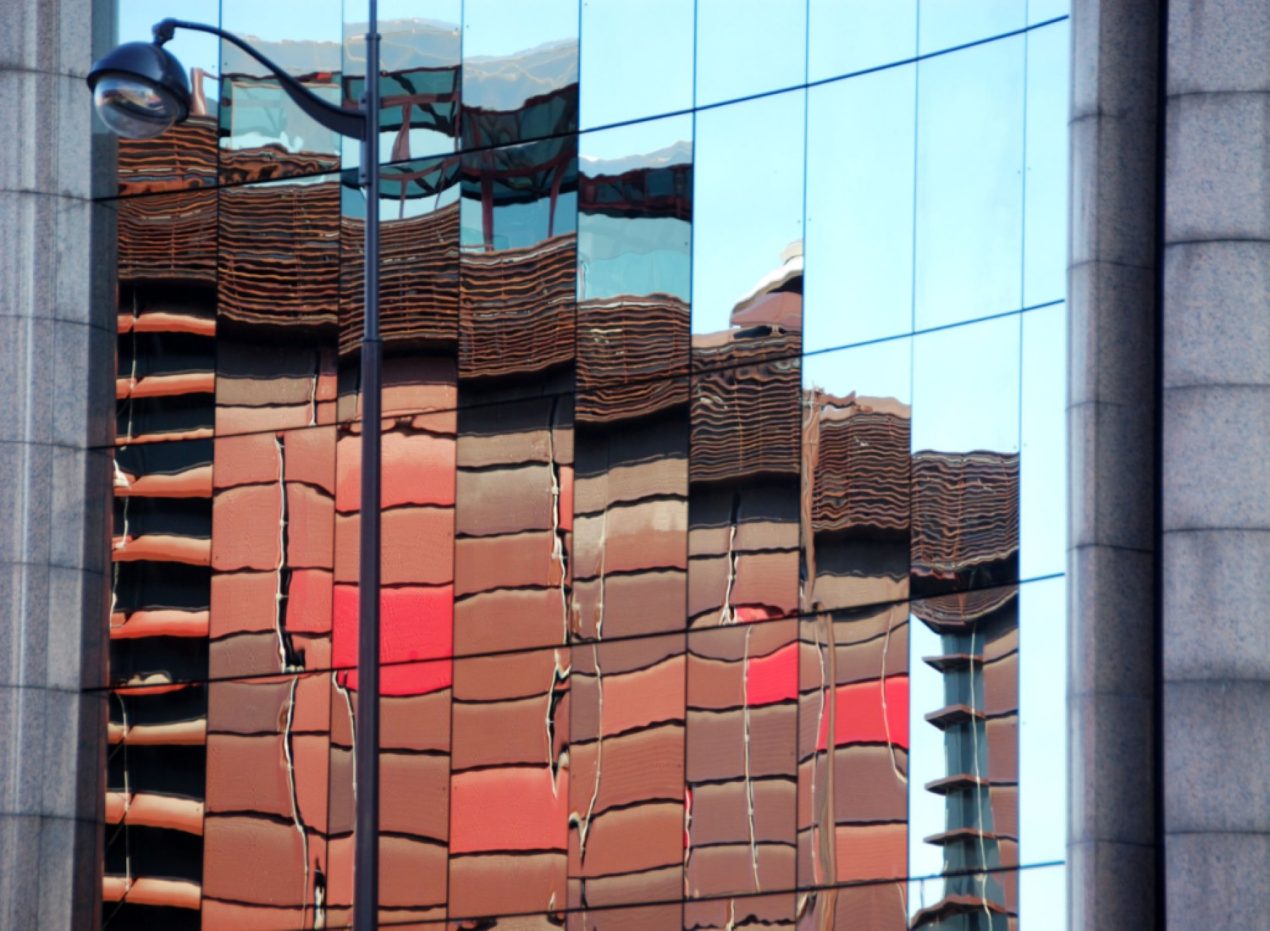
The range and complexity of the objects displayed is a testament to human creativity through the ages. Set aside half a day to explore this incroyable museum.
Special exhibitions are also featured. On one visit, we saw an exhibition of Picasso’s collection of art from around the world, including Africa.
The museum is open Tuesday to Sunday from 10:30 am to 7:00 pm (Thursdays until 10:00 pm).
#6: Rodin Museum
The Musée Rodin in the 7th arrondissement is simply gorgeous. Housed in the magnificent Hôtel Biron and surrounded by three hectares of sculpture-studded gardens, the Musée Rodin celebrates the work of one of France’s premier sculptors.
Check out The Thinker perpetually contemplating life in the garden then go inside and marvel at the statue called The Kiss. Ooh la la! Wander through room after chandeliered room of sculptures—some marble, some plaster, some bronze. The sheer volume and range of work is overwhelming.
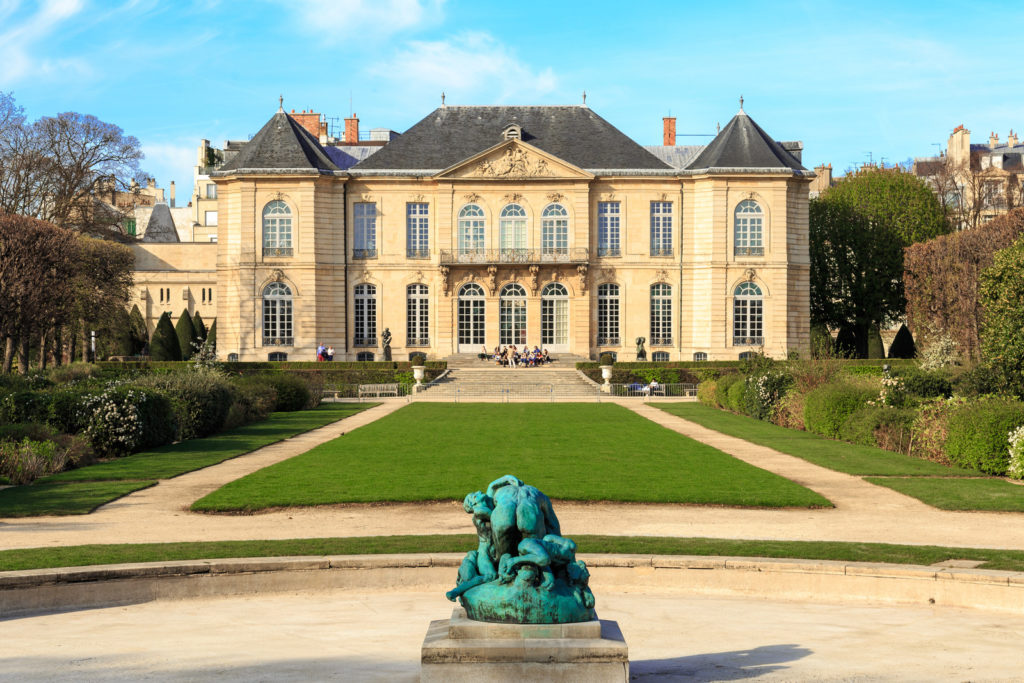
The Musée Rodin is open Tuesday to Sunday from 10 am to 6:30 pm.
#7: Musée Maillol
In a quiet area of the 7th arrondissement, the Musée Maillol is well known by Parisian art lovers for its special exhibitions but is not as well known by visitors. We’ve seen excellent exhibitions at the Maillol, including an collection of paintings by van Gogh and a spectacular display of paintings by Artemisia Gentileschi.
The exhibitions we’ve seen have featured several walls’ worth of information about the paintings—all in French. If you don’t read French, ask if a handout with an English translation is available.
The Musée Maillol was established by Dina Vierny, an artists’ model who became a famous singer, art dealer, collector, museum director, and Aristide Maillol’s muse for the final ten years of his life. The top floors of the Musée Maillol feature many works by Maillol, including monumental sculptures of female nudes. Maillol’s work is amazing and beautifully displayed. You’ll also find works by several 20th-century artists.
The Musée Maillol is open daily from 10:30 am to 6:30 pm when exhibitions are on (Fridays until 8:30 pm).
#8: Gustave Moreau Museum
The Musée National Gustave Moreau in the 9th arrondissement at the foot of Montmartre is quite the revelation. If you’re familiar with the work of the symbolist painter Moreau, you’ll know that you’re in for a treat. The museum occupies the painter’s family home and includes hundreds of paintings and watercolors showcasing the work of a painter many consider the master of French Symbolism.
Some of the paintings are massive and contain so much intricate detail that your eyes get sore just looking at them!
The museum is open daily, except Tuesdays, from 10 am to 6 pm.
#9: Marmottan Museum
Located in the stylish 16th arrondissement, the Musée Marmottan Monet is one of the loveliest art museums in Paris. Highlights of the collection are the works by the impressionists Claude Monet and Berthe Morisot. In addition, you’ll see a collection from the Middle Ages, the Renaissance, and the Second Empire, along with paintings by other impressionists, such as Caillebotte, Degas, Pissarro, Renoir, Sisley, and Rodin.
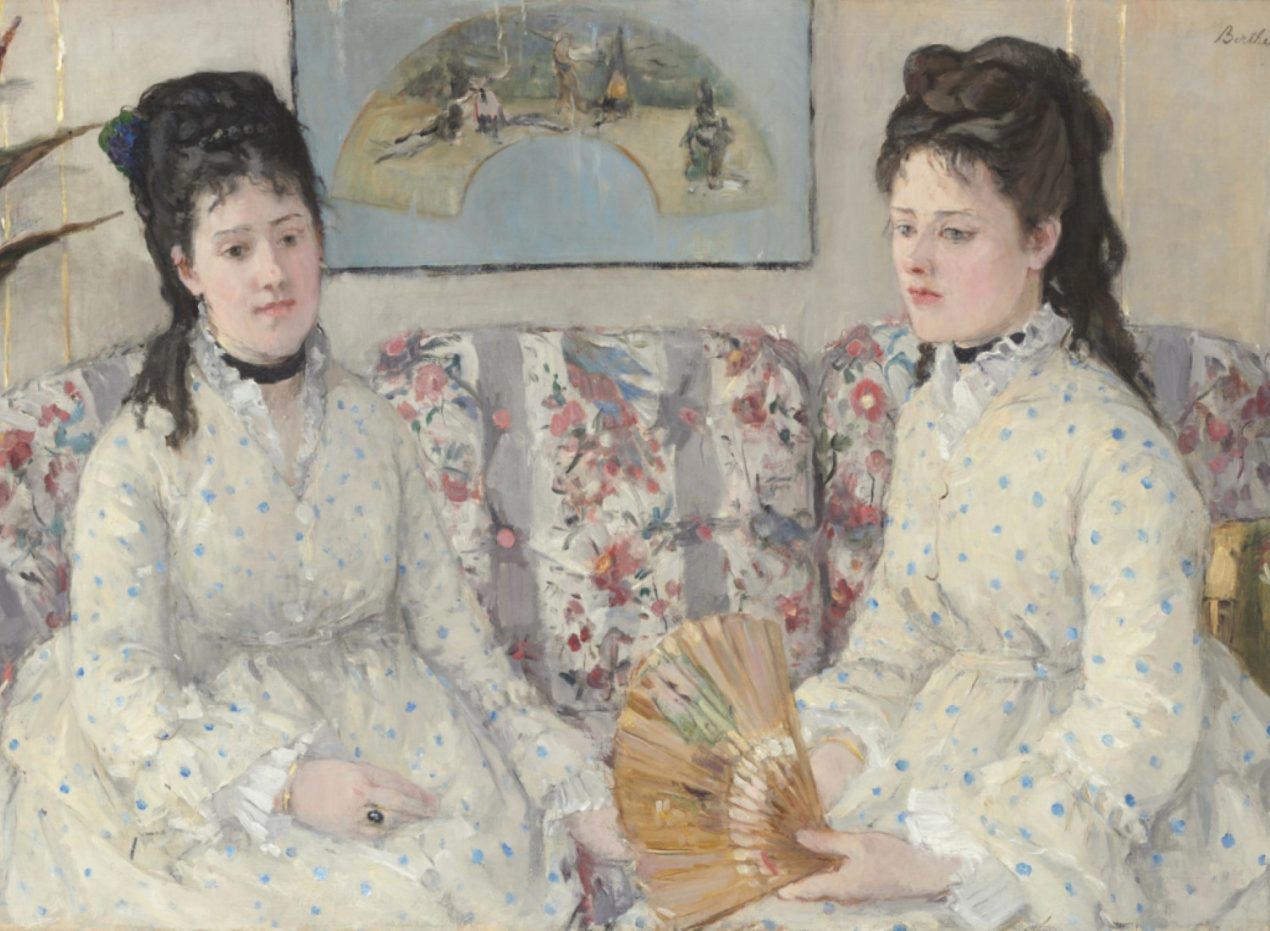
The Marmottan is a bit of a trek from the Metro (La Muette or Ranelagh) but worth the effort required to get there. It features a great museum shop (I’m a sucker for a good museum shop).
The museum is open Tuesday to Sunday from 10 am to 6 pm (last admission: 5.30 pm), with extended hours to 9 pm on Thursdays (last admission: 8.30 pm).
Conclusion
Have you been to any of these art museums in Paris? Do you have other suggestions for artsy travelers? Share your recommendations in the Comments section below.
Here are some more posts about art in Paris:
